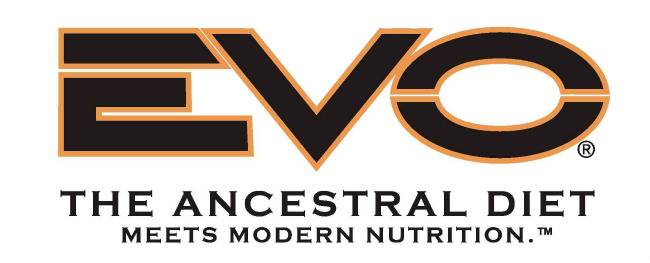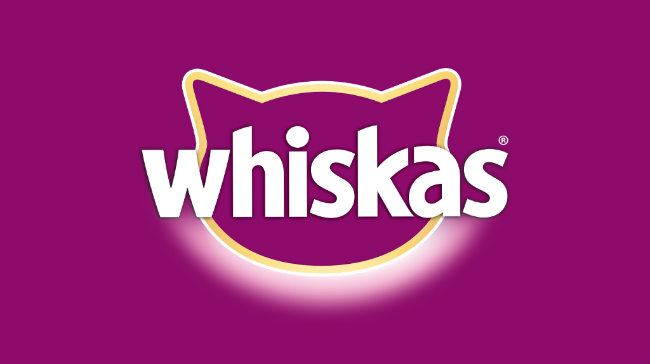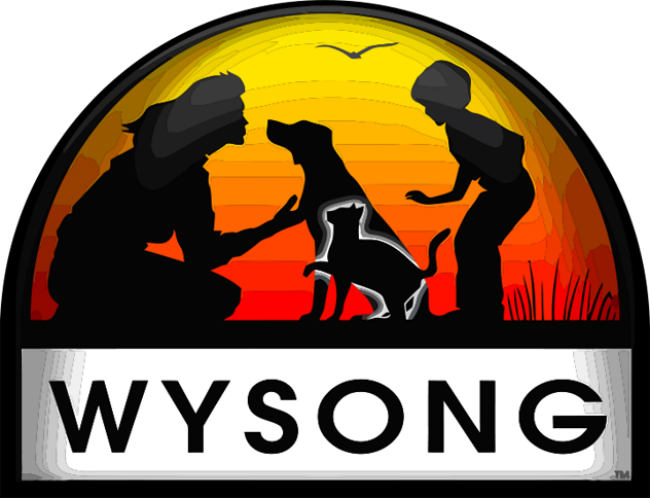Evo Cat Food is one of the more popular brands of cat food and is considered by many to be of higher quality. However, you should always analyze the ingredients in any cat food before you consider purchasing it. By simply analyzing the ingredients, we can get a good idea of the quality for any cat food, regardless of brand. In this Evo Herring and Salmon cat food review, we will explore the ingredients in this specific Evo blend to see if it is a food you should feed to your cat.
Ingredients In Evo Herring And Salmon Cat Food
Herring, Menhaden Meal, Salmon, Salmon Meal, Tapioca Starch, Menhaden Oil (Preserved with Mixed Tocopherols, a Source of Vitamin E), Pea Fiber, Natural Flavors, Apples, Carrots, Eggs, Peas, Cottage Cheese, Minerals (Zinc Proteinate, Iron Proteinate, Copper Proteinate, Manganese Proteinate, Calcium Iodate), Dried Chicory Root Extract, Menadione Sodium Bisulfite, Complex
Vitamins (Betaine Hydrochloride, Niacin Supplement, Vitamin A Supplement, Thiamine Mononitrate, Calcium Pantothenate, Riboflavin Supplement, Beta Carotene, Vitamin B12 Supplement, Vitamin D3 Supplement, Biotin, Pyridoxine Hydrochloride, Folic Acid), Ascorbic Acid, Vitamin E Supplement, Direct Fed Microbials (Dried Enterococcus faecium, Dried Lactobacillus acidophilus, Dried Lactobacillus casei), Rosemary Extract
Analysis Of The Top 5 Ingredients
Whenever you are reviewing a commercial cat food blend, it is good practice to pay special attention to the first 5 ingredients listed. These ingredients make up the vast majority of the nutritional content in the food. Let's take a look at the top 5 ingredients in this cat food.
Herring - Herring is a silvery fish that is most abundant in coastal waters. Fish provides an excellent source of proteins as well as high amounts of healthy omega-3 and omega-6 fatty acids. Some people worry about mercury levels in fish. It's true that all fish contains some degree of mercury, the level in salmon is much lower than other types of fish and the FDA doesn't believe it causes any problems. Most herring in cat food is likely farmed herring, but higher end cat food (especially those labeled "natural") can often times be fished from natural environments. The biggest problem with fish ingredients, including herring, is if the fish includes an antioxidant called ethoxyquin (EMQ). It is believe that ethoxyquin could be very harmful to cats and other animals. Always make sure you are using "Ethoxyquin free" cat food blends when they include fish ingredients. When in doubt, call the customer service number and ask.
Menhaden Fish Meal - This is a meal obtained from processing fish of the menhaden species. It is a good source of high quality fish protein and Omega-3 essential fatty acids, including EPA, DHA, and arachionic acid. Some people worry about mercury levels in fish. It's true that all fish contains some degree of mercury, the level in salmon is much lower than other types of fish and the FDA doesn't believe it is cause for much concern. The biggest problem with fish ingredients, including herring, is if the fish includes an antioxidant called ethoxyquin (EMQ). It is believe that ethoxyquin could be very harmful to cats and other animals. Always make sure you are using "Ethoxyquin free" cat food blends when they include fish ingredients. When in doubt, call the customer service number and ask.
Salmon - Salmon is an excellent source of high quality proteins for cats and is extremely rich in healthy Omega 3 and Omega 6 fatty acids. Some people worry about mercury levels in fish. It's true that all fish contains some degree of mercury, the level in salmon is much lower than other types of fish and the FDA doesn't believe it is cause for concern. Most salmon in cat food is farmed salmon, but higher end cat food (especially those labeled "natural") can often times be fished from natural lakes and streams. The biggest problem with fish ingredients, including salmon, is if the fish includes an antioxidant called ethoxyquin (EMQ). It is believe that ethoxyquin could be very harmful to cats and other animals. Always make sure you are using "Ethoxyquin free" cat food blends when they include fish ingredients. When in doubt, call the customer service number and ask.
Salmon Meal - Salmon is an excellent source of high quality proteins for cats and is extremely rich in healthy Omega 3 and Omega 6 fatty acids. Some people worry about mercury levels in fish. It's true that all fish contains some degree of mercury, the level in salmon is much lower than other types of fish and the FDA doesn't believe it causes any problems at all. Most salmon in cat food is farmed salmon, but higher end cat food (especially those labeled "natural") can often times be fished from natural lakes and streams. The biggest problem with fish ingredients, including salmon, is if the fish includes an antioxidant called ethoxyquin (EMQ). It is believe that ethoxyquin could be very harmful to cats and other animals. Always make sure you are using "Ethoxyquin free" cat food blends when they include fish ingredients. When in doubt, call the customer service number and ask.
Tapioca Starch - Tapioca flour, also known as tapioca starch, is a starchy white flour that has a slight sweet flavor to it. Tapioca flour is an alternative to traditional wheat flours and has a variety of uses in baking. Tapioca is a source of carbohydrate obtained from the roots of the cassava plant (Manihot esculenta), which is indigenous to Latin America. It is not a cereal grain like corn or wheat which have links to food allergies in cats. The benefit to using tapioca in a pet food as the primary carbohydrate source instead of typical grains is tapioca’s biochemical simplicity. Grains are complex in the sense that they contain proteins and other phytonutrients in addition to carbohydrates. Tapioca is just starch - a combination of amylase and amlylopectin. There are no known canine or feline allergies to tapioca, so this is becoming a more common ingredient in many pet foods.
Additional Ingredients Of Interest
Menhaden Oil - Menhaden is a forage fish that produces very healthy levels of omega 3 and omega 6 fatty acids. These fatty acids are very healthy for cats. In this case, the oil is extracted from the fish and used in the cooking process as well as to add these beneficial fat sources to the food. While some cat owners shy away from fish products due to mercury levels naturally found in fish and the amount of farmed fish used in cat food, this ingredient is unlikely to cause any issues as it is simply the oil extract.
Pea Fiber - Peas are becoming more and more common in pet foods today, especially those listed as grain-free, holistic, or natural pet foods. While peas are certainly not grains, they serve much the same purpose. It mostly acts as a filler and a cheap way to increase the protein percentage of the food. However, cats receive almost no nutritional value from peas. Since cats are obligate carnivores, they require proteins from meat based ingredients. There is very little research that has been performed on the long term effects of cats consuming peas. We do know that peas can cause runny poop or digestion issues in dogs, but the full effect on cats remains a bit of an unknown. At best, this ingredient will act as a filler and will not provide much nutritional value, if any, to your cat.
Natural Flavors - While this ingredient may appear to be healthy and safe because it is "natural", we believe this is a pretty poor quality ingredient. While it might be a harmless flavoring sprayed onto the food, natural flavors can be obtained from almost anything deemed "natural". Not all things natural are good and some "natural flavor" sources can be downright harmful. Without being able to verify what chemicals are included into this ingredient, we feel a bit apprehensive about it.
Apples - Apples provide an excellent source of pectin, a water- soluble fiber. This is an ingredient normally found in higher end brands of cat food.
Carrots - A good source of carbohydrates, vitamins, and minerals, carrots are becoming more common in pet foods. This ingredient is also known to boost the immune system and help promote healthy eyes in cats as well as providing a good source of fiber.
Eggs - While raw eggs can cause some skin problems in cats, cooked eggs are healthy for cats and supply quite a bit of protein. Some cat owners prefer only feeding egg whites because the yolks can add a fairly high amount of cholesterol. In addition to the protein content, eggs also supply potassium, magnesium, calcium, phosphorus, copper, zinc, and iron. In moderation, this is considered a healthy ingredient for cats.
Peas - Peas are becoming more and more common in pet foods today, especially those listed as grain-free, holistic, or natural pet foods. While peas are certainly not grains, they serve much the same purpose. It mostly acts as a filler and a cheap way to increase the protein percentage of the food. However, cats receive almost no nutritional value from peas. Since cats are obligate carnivores, they require proteins from meat based ingredients. There is very little research that has been performed on the long term effects of cats consuming peas. We do know that peas can cause runny poop or digestion issues in dogs, but the full effect on cats remains a bit of an unknown. At best, this ingredient will act as a filler and will not provide much nutritional value, if any, to your cat.
Cottage Cheese - This ingredient is sometimes included as an alternative to milk since, contrary to popular belief, many cats have issues digesting milk. While it isn't an especially nutritious ingredient, unless your cat has a specific allergy to cottage cheese or is lactose intolerant, this ingredient should not be harmful. Your cat will probably also enjoy the flavor and the addition of this ingredient will help to make your cat feel more full as well. There are some claims that this ingredient causes a cats poop to stick a little more than usual, but since this is included in a small quantity, it should not be an issue for most cats.
Minerals - Only two vitamins (A and C) and two minerals (calcium and iron) are required on the food label. Cat food companies can voluntarily list other vitamins and minerals in the food. So, in this case, they have simply listed "minerals" but we're not exactly sure what is included here. This ingredient is very unlikely to cause harm to your cat, but it would be nice if they would voluntarily list the minerals being used here.
Dried Chicory Root Extract - Commonly known as a soluble fiber, the inulin derived from the Chicory Root is a fructooligosaccharide added to help maintain digestive tract health and function in humans, although the full benefits in cats is not well known. Chicory root is a common coffee substitute in various cultures. It is used as a sweetener in the food industry with a sweetening power 1⁄10 that of sucrose. While the nutritional benefits of this ingredient might be a little questionable, there does not seem to be any reason for concern when feeding this ingredient to your cat.
Menadione Sodium Bisulfate - This ingredient is a synthetic version of vitamin K. It is used as a cheaper source of vitamin K which cats require to survive. Unfortunately, this is one ingredient we usually advise cat owners to stay away from. It does not have the best reputation for safety in pet foods and we would rather see non- synthetic forms of vitamins.
The remainder of ingredients provided in this food are low enough in quantity that none of them should provide health issues for your cat unless your cat has a specific allergy.
Conclusion
As we examine the ingredients, it appear this is a rather high quality cat food. We are mostly concerned with the top 5 ingredients as that accounts for about 90% of the nutritional value. The first 4 out of 5 ingredients are high quality meat based ingredients, whereas many lower quality cat foods would include grains and filler ingredients. It appears this is a good blend to try with your cat.





